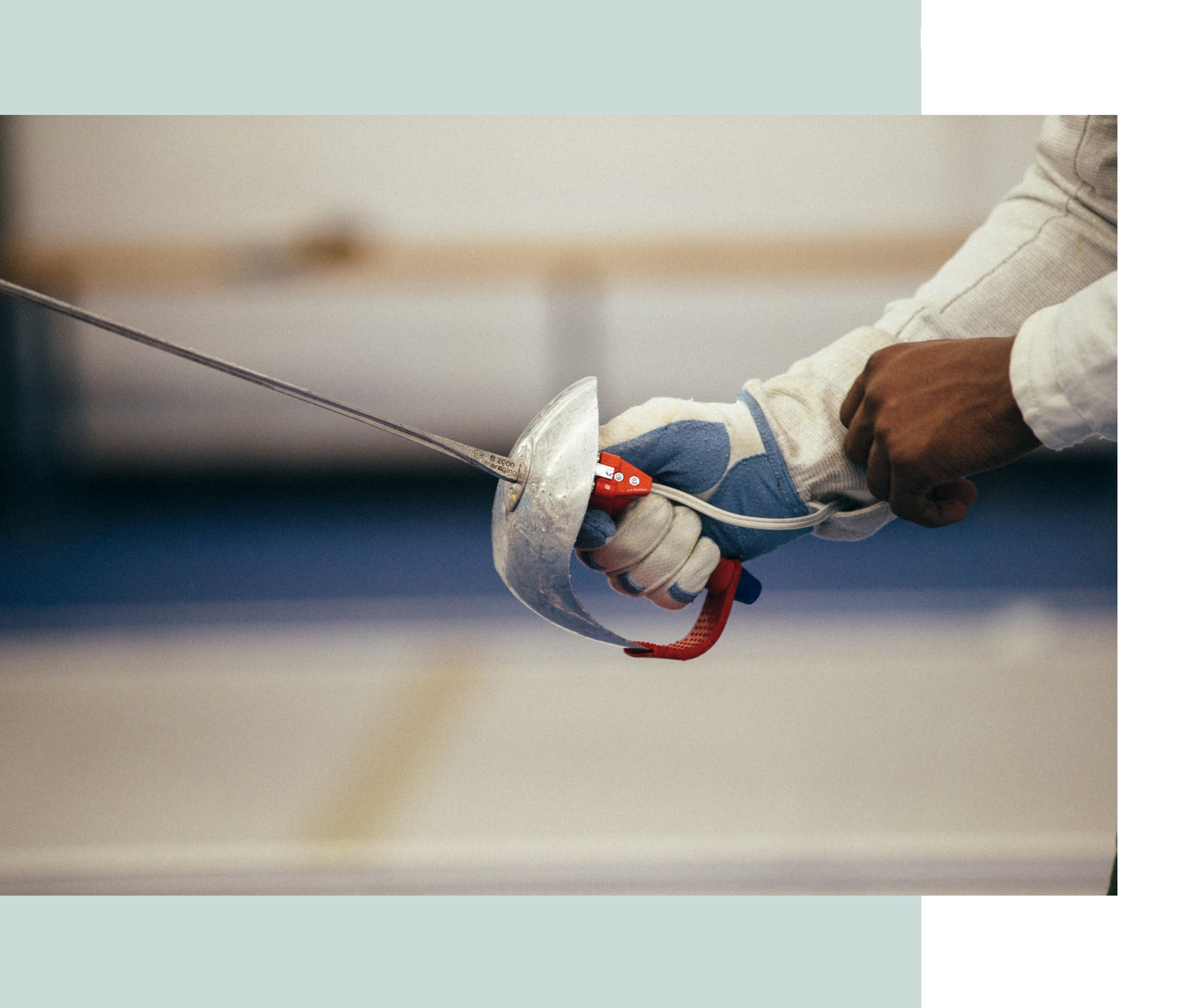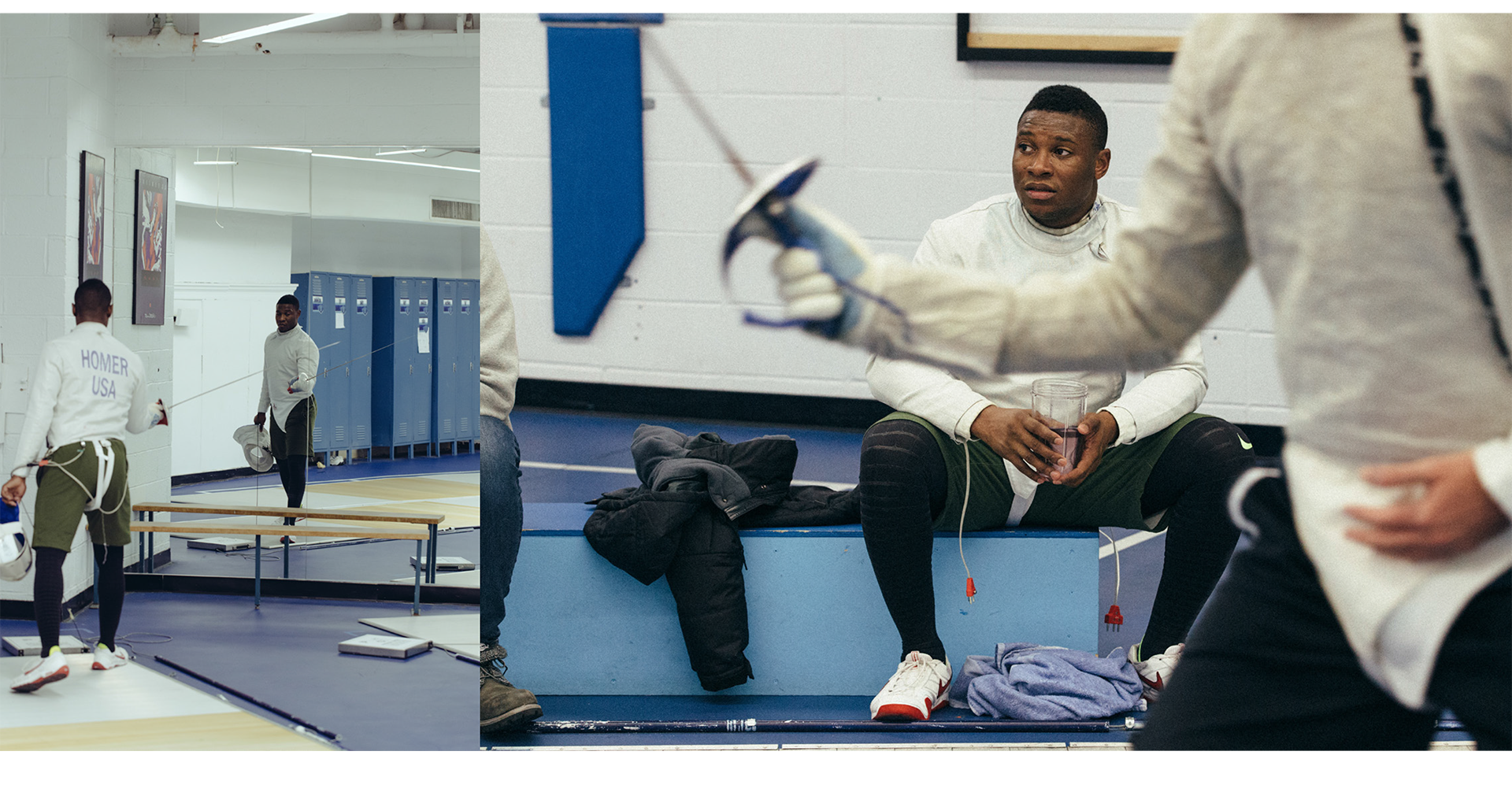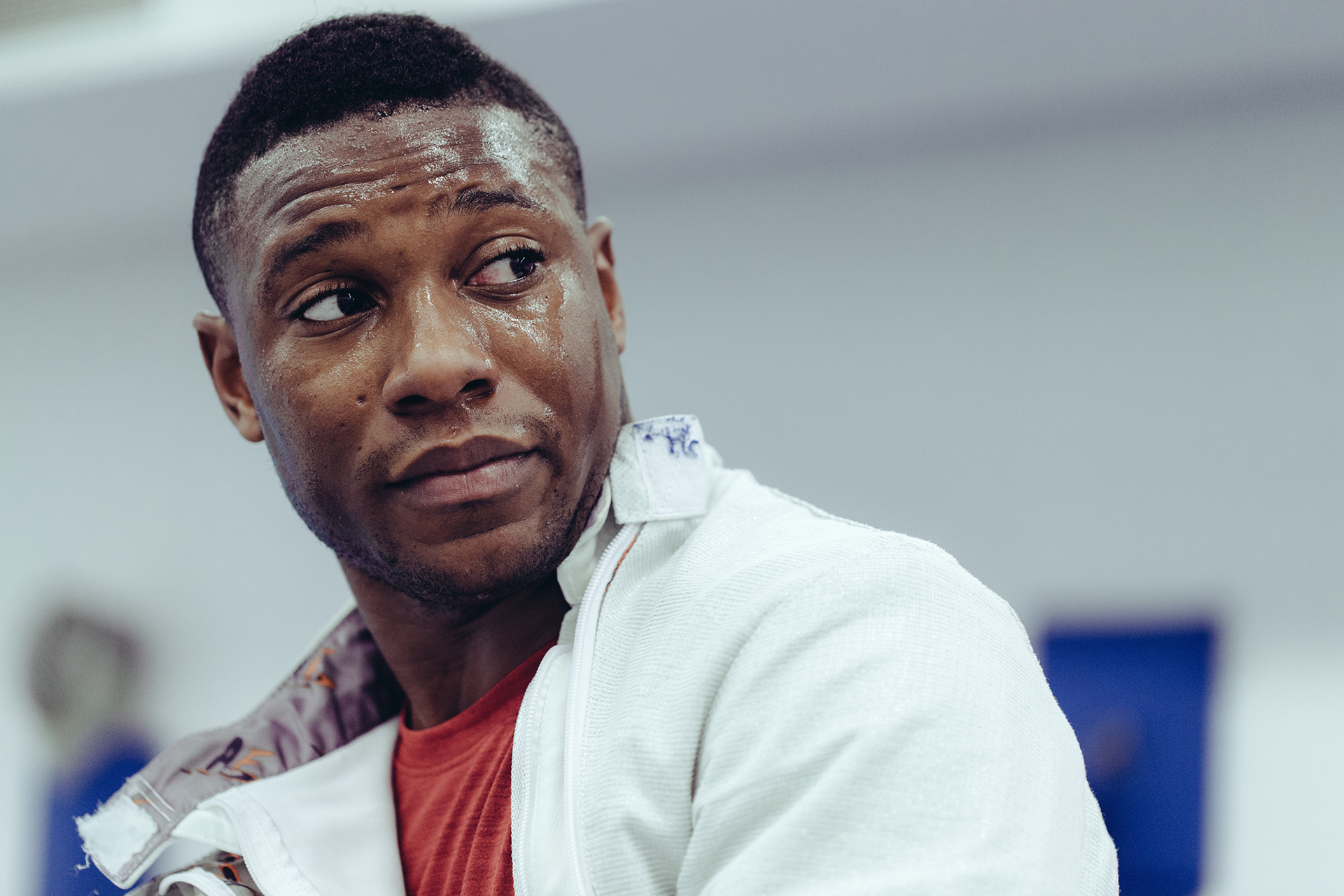“Gold!” replies Daryl Homer when asked about his aspirations for Rio 2016. It’s an open question but Homer has a gleaming, monosyllabic retort. His answer is as direct and assertive as his swordplay. Gold.


THE VERY AESTHETIC OF THE SPORT STOKES NOTIONS OF BYGONE HEROES AND EPIC BATTLES. WHITE-CLAD KNIGHTS DUKING IT OUT IN OLYMPIC HALLS. HOWEVER, FOR EVERY ARCHETYPICAL HERO AN ORIGIN STORY OF MODEST BEGINNINGS ACCOMPANIES HIM OR HER.

It was at The Peter Westbrook Foundation where Daryl Homer matured. As his physical form came to fruition, his fencing style grew with it. At 5’8”, Daryl didn’t exactly fit the mould of a world-beating fencing specimen, but his persistence was resolute. Like his mentor Westbrook and hero Zorro, he favoured the sabre.
“Sabre was the most aggressive of the weapons. It felt unrestricted to me.”
What Homer lacks in height and reach, he makes up for in pure voracity. Homer’s flunge became his trademark and with his fast, aggressive and unrelenting sabre, he started taking the fencing world by storm.
He won a bronze medal at the 2007 Cadet World Fencing Championships and another bronze at the 2009 Junior World Championships in Belfast. That same year he competed in his first senior World Championships in Antalya, finishing 23rd, and took in first NCAA title as a sophomore.
In the 2009–10 season Homer successfully defended his NCAA title. At the 2010 World Championships in Paris he defeated France’s Boladé Apithy and Nicolas Lopez to reach the table of 16, and finished 12th. The next season he won the gold medal at the 2011 Pan American Championships after prevailing in the final over Canada’s Vincent Couturier.

By 2012, Daryl Homer was rated no. 12 in the FIE rankings. He was well on his journey and climbing the rankings fast.

However, it’s his seemingly ill-suited roots that fuel his form on the piste. Hailing from the Bronx instilled in Homer a streetwise edge to his swordsmanship.
“Being a kid from the Bronx you learn quickly that you have to fight for everything if you want to get to the top. Knowing that has pushed me to the top of my field in the sport. But being a Bronx kid you also learn that people are always waiting to catch you slipping. The fear of being caught slipping helps me keep pushing.”
Homer didn’t let his environment stifle him. In fact he took the potentially damning elements of his surroundings and used them to his advantage. Forever the optimist and ambassador, he champions his community doggedly.
Through the non-profit organization Fencing in the Schools, he has introduced fencing to children in Harlem, The Bronx, South Side Chicago and Newark. He was also selected for Neiman Marcus’ Fall 2014 New Influencer Campaign as an emerging man of style who redefines culture through their personal passions.
In his hometown, he is a revered figure. The walls of the Manhattan Fencing Center read like a tapestry of Homer’s meteoric rise. From his humble beginnings to the lofty heights he’s reached today, Daryl Homer has remained narrow-sighted. Like the piste, there are no ways around the fact. He has no alternate route or way out, only the drive to lunge forward and not stop until his opponent is bested – his goal realised. Gold.
[artifact_post_details el_class=”medium”]







